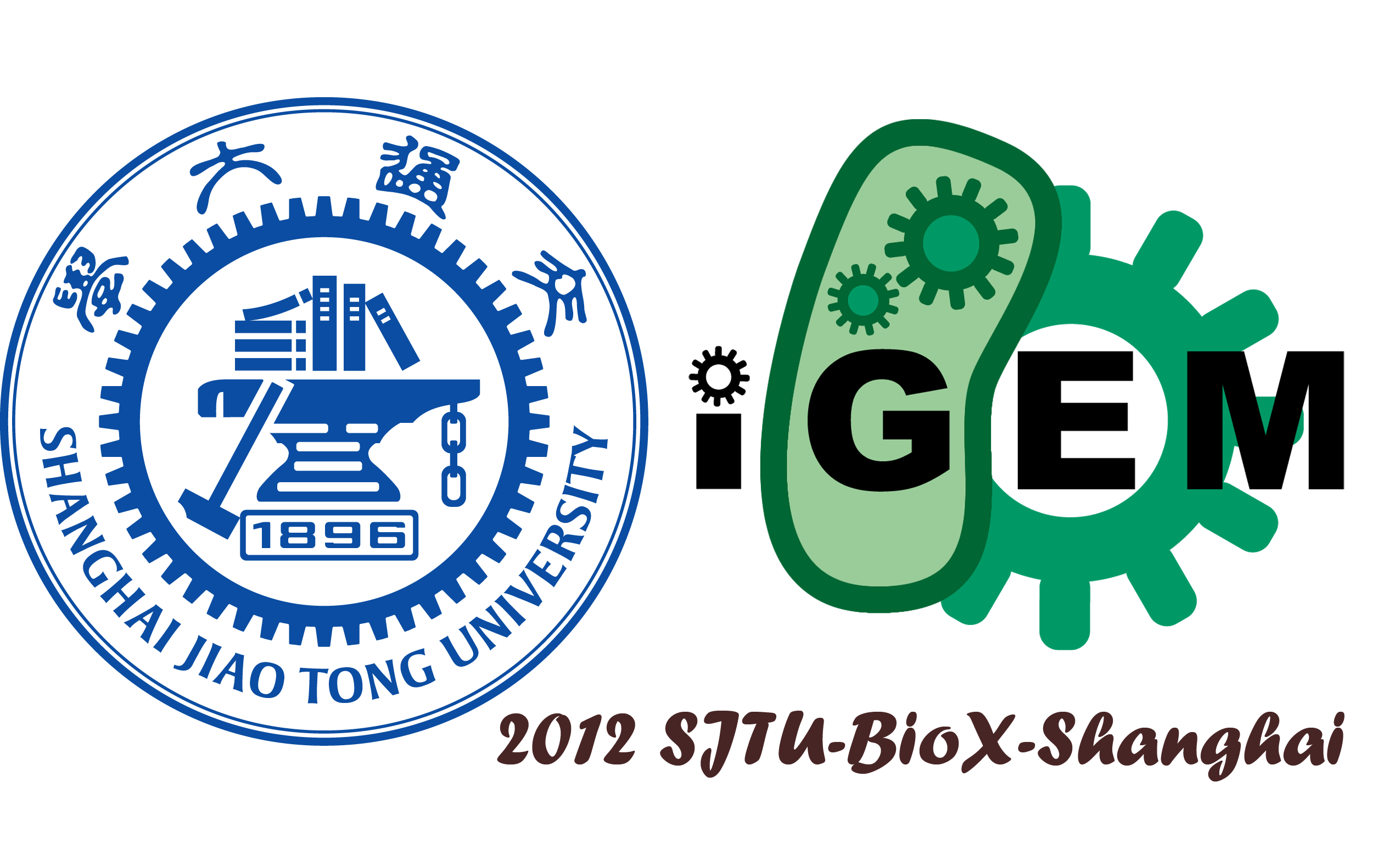Team:SJTU-BioX-Shanghai
From 2012.igem.org
(→Motivation:) |
(→What to do) |
||
| Line 49: | Line 49: | ||
#To accelerate reactions in certain biochemical pathway | #To accelerate reactions in certain biochemical pathway | ||
| - | |||
#To switch the biochemical pathway from one to the other through extracellular signal control | #To switch the biochemical pathway from one to the other through extracellular signal control | ||
Our ultimate goal is to design a universal tool which functions as “engine” and “switch”. We master the membrane of E.coli and change it into an efficient workshop, where biochemical reactions are highly driven and well controlled. The “membrane workshop” project will solve common problems existing in bioengineering, i.e. the speed limit rooted in compartment-lacking prokaryotic cells and the lack of control over branched reactions. | Our ultimate goal is to design a universal tool which functions as “engine” and “switch”. We master the membrane of E.coli and change it into an efficient workshop, where biochemical reactions are highly driven and well controlled. The “membrane workshop” project will solve common problems existing in bioengineering, i.e. the speed limit rooted in compartment-lacking prokaryotic cells and the lack of control over branched reactions. | ||
| - | |||
===Membrane Engine (Accelerator)=== | ===Membrane Engine (Accelerator)=== | ||
Revision as of 02:05, 10 July 2012
About of Our TeamOur team consists of 11 members, who are all junior students of Shanghai Jiao Tong University. Most of us came from School of Life Sciences and Biotechnology. We are working, living and studying like a whole family. We were discussing our project and performing most of experiments in Bio-X institute of SJTU. Team Members
Description of Our ProjectMembrane WorkshopOur slogan: Cluster makes it faster; interaction alters the direction Motivation:
What to doWe aim to attach enzymes involved in certain reactions to membrane proteins in order to fulfill goals stated below:
Membrane Engine (Accelerator)As there is no compartment in prokaryotic cells, enzymes involved in a biochemical pathway diffuse all over the cytoplasm. Intermediates generated from one enzyme cannot be passed efficiently to the next due to spatial obstacles. However, if we attach those enzymes to engineered membrane proteins which assemble together, the reactions are going to proceed much faster. Why do we attach enzymes to interacting protein domains and ligands that assemble together?
Why do we localize the enzymes to the membrane?
Membrane SwitchNow that we have built a device that can speed up a biological pathway. Our next goal is to control the pathway better---- to switch the direction of certain reactions, as shown in figure 3. Divergent biochemical pathways commonly exist in all types of organisms, and most of those reactions are stringently and internally controlled. However, it is extremely hard to artificially control and switch the directions of these reactions. Usually there are two different products produced in divergent reactions. Sometimes we want one product, and sometimes we want the other. Using our designed device, we can change the direction by introducing different extracellular signals. File:SJTU-BioX-Shanghai team.png Your team picture |
| Home | Team | Official Team Profile | Project | Parts Submitted to the Registry | Modeling | Notebook | Safety | Attributions |
|---|
 "
"
